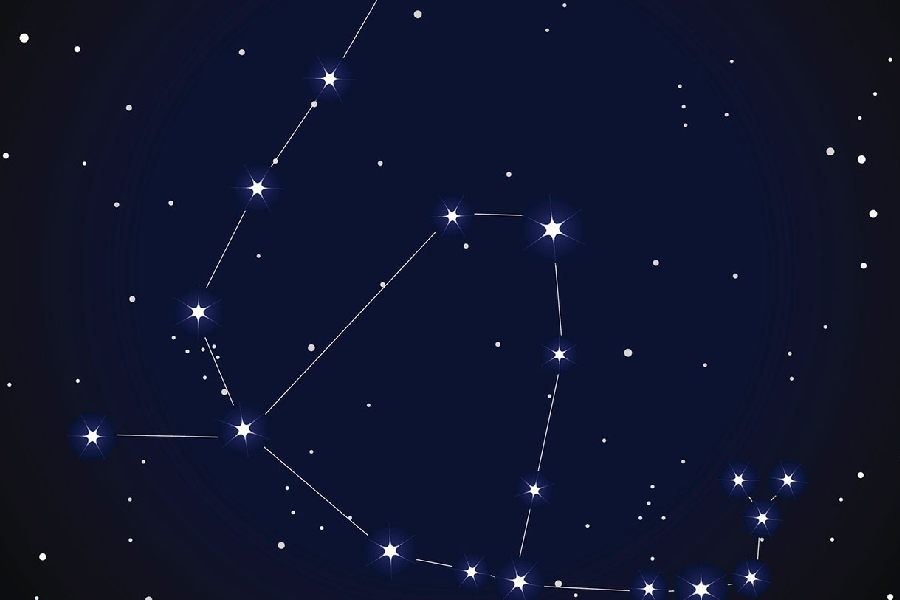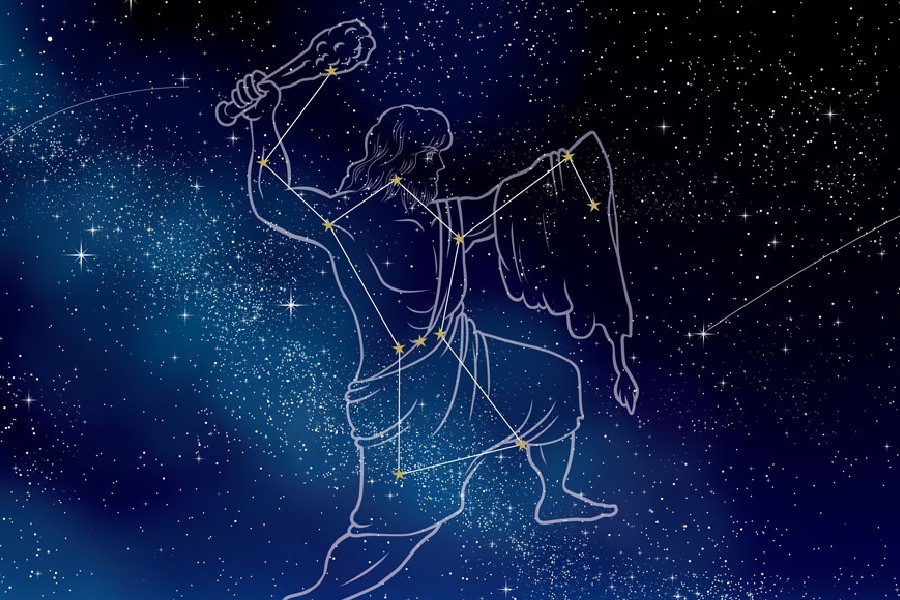When we look at the night sky, stars seem to form patterns we call constellations. Our ancestors imagined figures and creatures in these starry shapes. But the stars within a constellation aren’t truly close together. But how many constellations are there?
People might be surprised how the number of named constellations has changed over history. So, read on to learn about the origins of constellations and more!

How Many Constellations Are There?
There are over 100 names for constellations globally. But how many constellations are recognized today? The International Astronomical Union (IAU) officially recognizes 88 today. This includes the traditional 48 constellations listed by Ptolemy in the 2nd century and more modern constellations created and defined between the 16th and 20th centuries.
In 1930, the IAU set the boundaries for these constellations to clarify which stars are part of specific patterns. Although constellations seem fixed, they undergo subtle movement over thousands of years because of Earth’s wobble. Our perspective gradually shifts as time passes, potentially prompting the IAU to update the official count of constellations.
Ancient and Modern Constellations
Ancient and modern constellations offer a captivating juxtaposition, showcasing the evolution of humanity’s understanding of the night sky. In examining these celestial arrangements, notable differences and intriguing similarities emerge in their identification and naming conventions.
Ancient constellations, often rooted in mythology and cultural narratives, were crafted by various civilizations to make sense of the cosmos. These constellations frequently embodied characters from folklore, legends, or religious stories.
They created a celestial tapestry that served practical and symbolic purposes. Examples include the Greek constellations, such as Orion and Ursa Major. Each constellation is rich with mythological tales that guided ancient observers.
On the contrary, modern constellations have evolved with advancements in astronomical knowledge and technology. As mentioned, the International Astronomical Union (IAU) officially recognizes 88 constellations, establishing a standardized system for naming and identifying these patterns across the globe.
These designations are based on scientific principles, including celestial coordinates and boundaries. They deviate from the mythological narratives that defined ancient counterparts.
Historical and Cultural Origins
Over 3,000 years ago, constellations found their beginnings in the realms of ancient astronomy and mythology. In their pursuit of understanding the night sky, the Babylonian astronomers crafted some of the earliest star catalogs.
These mythical stories aren’t confined to a single culture. Ancient civilizations like the Greeks and Romans developed the concept of constellations, but parallel ideas emerged independently across diverse traditions. In ancient Egypt, China, the Pacific Islands, among Native Americans, and various global cultures, constellations took on unique meanings.
The stories behind these constellations reflect the legends and beliefs significant to each ancient culture. More than 100 historical constellations have been acknowledged and preserved in global astronomy archives. These celestial patterns, with their origins in the distant past, continue to connect us to the wonders of the night sky and the diverse narratives of humanity’s early exploration of the cosmos.
Understanding the Celestial Sphere
The celestial sphere, an abstract construct enveloping Earth, serves as a crucial tool in astronomy. Its conceptualization simplifies spatial complexities, providing a two-dimensional framework for celestial observations. This imaginary sphere is indispensable for comprehending the motion and positions of celestial objects.
Observing constellations in the Northern Hemisphere
In the Northern Hemisphere, unique patterns of constellations become apparent due to Earth’s rotation and tilt. It is crucial to recognize these stellar arrangements, as they play a key role in navigation and hold cultural significance.
As the seasons change, the visibility of these constellations undergoes fluctuations, emphasizing the dynamic nature of celestial observation. This continuous shift in the night sky adds an intriguing layer to our connection with the cosmos, marking the passage of time and reflecting the interconnectedness of Earth and the heavens.
Star Maps and Historical Patterns
Embarking on exploring star maps and historical patterns, early celestial cartographers emerged as pivotal figures. Their ability to keenly observe and skillfully weave stories allowed them to unravel the mysteries of the cosmos, presenting them with inaccessible sketches.
As we traverse the corridors of time, it becomes evident that these foundational maps are the bedrock for the user-friendly star charts we now have at our fingertips. These visionary cartographers mapped the celestial realm and laid the groundwork for comprehensible representations that continue to guide enthusiasts and astronomers.

Recognizing historical patterns in the night sky and their representation
As individuals connect the dots in the sky, forming familiar shapes such as the majestic Orion or the graceful Cassiopeia, they share a shared experience of exploring our celestial heritage. These constellations are not merely random arrangements of stars; instead, they embody stories and beliefs intricately woven into the fabric of the night sky by diverse cultures across different epochs.
As one gazes upon these historical constellations, it is akin to opening a celestial time capsule. Within the vast expanse of the night sky, these patterns reveal narratives that have transcended time and continue to resonate with the human spirit.
The tales the stars tell serve as a collective bridge connecting people across cultures and generations, fostering a sense of unity through our shared celestial legacy. In the quiet contemplation of these cosmic stories, individuals find a connection not only to the vastness of the universe but also to the rich tapestry of human history and imagination.
Significance of Individual Stars
Within the intricate tapestry of constellations, individual stars emerge as celestial beacons, each contributing to the allure of the night sky. Let’s delve into the significance and brightness of some prominent stars within their respective groupings.
Orion’s Belt Stars (Alnitak, Alnilam, Mintaka)
In the iconic Orion constellation, the three stars forming the Belt—Alnitak, Alnilam, and Mintaka—stand out prominently. Alnitak, the easternmost star, is a triple star system radiating a subtle bluish glow.
Alnilam, situated in the middle, shines with a brilliant blue-white brilliance, and Mintaka, the westernmost star, contrasts with its blue and orange components. Together, they guide observers in navigating the celestial expanse.
Sirius in Canis Major
Sirius, the brightest star in the night sky, takes center stage in Canis Major. Emitting a dazzling white light, Sirius has been revered across various cultures. Also known as the “Dog Star,” it holds cultural significance in ancient mythology and is a key maritime reference for early civilizations.
Vega in Lyra
Nestled in the Lyra constellation, Vega is a beacon of brilliance. Vega’s bluish hue adds enchantment to summer nights as one of the brightest stars in the northern hemisphere. This star plays a central role in the summer triangle asterism, forming a celestial trio with Altair and Deneb.
Betelgeuse in Orion
Marking Orion’s left shoulder, Betelgeuse is a red supergiant, a star in the late stages of its life. Its reddish appearance is striking against the backdrop of Orion’s other stars. Betelgeuse’s variability makes it a captivating subject for astronomers, as its brightness fluctuates over time.
Pleiades Cluster (Seven Sisters)
While not a single star, the Pleiades cluster in Taurus deserves mention. Also known as the Seven Sisters, this group of stars includes prominent members such as Alcyone, Electra, and Maia. The Pleiades are a stunning open star cluster, easily visible to the naked eye, and hold cultural significance in various mythologies.
How Do Different Cultures Recognize Different Patterns of Stars?
Across diverse cultures, the recognition and identification of patterns of stars have given rise to many unique constellations, each reflecting the distinct perspectives and narratives of different societies. The variations in naming and identifying these celestial patterns provide a rich tapestry of cultural diversity.
Mythological narratives
- Greek and Roman cultures: Ancient Greeks and Romans crafted constellations steeped in mythology. For example, Greek mythology often associates Orion with a great hunter. These stories helped with identification and added cultural significance to the night sky.
- Chinese constellations: In Chinese astronomy, constellations are often linked to mythological tales from Chinese folklore. The Azure Dragon (Qinglong) and the White Tiger (Baihu) are examples of constellations with deep mythological roots.
Navigational and agricultural significance
- Polynesian wayfinding: Polynesian cultures, such as the Maori and Hawaiian, have constellations intricately tied to navigation. The Pleiades, known as Matariki in Maori culture, is a cluster of stars with significance in marking the change of seasons and guiding navigation.
- Inca constellations: The Incas of South America, with their advanced understanding of agriculture, identified constellations related to the agricultural calendar. The constellation Yacana (Llama) was associated with the rainy season, crucial for crop cultivation.
Ancestral stories and animal symbolism
- Aboriginal dreamtime stories: Indigenous Australian cultures utilize constellations as part of dreamtime stories, connecting the celestial realm with ancestral narratives. The Emu in the Sky is a constellation representing an important figure in Aboriginal mythology.
- Navajo star clusters: The Navajo Nation in North America recognizes star clusters as constellations, often associated with animals like the coyote. These constellations hold cultural significance in Navajo storytelling.
Astrological interpretations
- Indian astrology (Nakshatras): In Indian astronomy and astrology, the concept of Nakshatras involves dividing the sky into lunar mansions, each associated with a star or group of stars. These Nakshatras are integral to Vedic astrology and have cultural and religious significance.
Conclusion
How many constellations are there? The number of constellations recognized by the International Astronomical Union is 88.
The constellations cover the entire sky and provide a useful system for mapping and navigation. While the patterns and images we see differ across cultures, the modern constellations represent an internationally agreed-upon system.
In their pursuit of discovery, people cannot fully grasp the intricate beauty of the celestial artwork that adorns the night sky. Also, the narratives woven around these constellations deepen their comprehension of diverse cultures across time and illuminate humanity’s connection to the vast cosmos.
